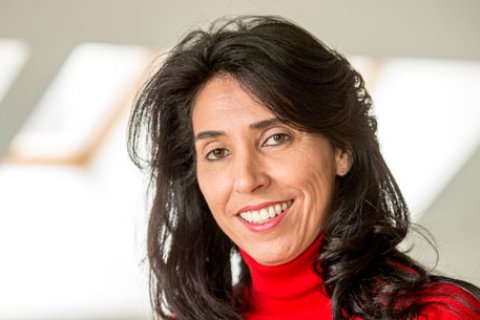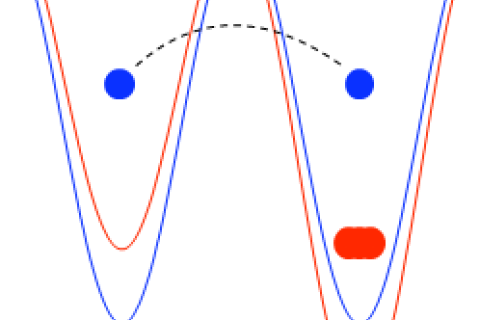Theories of high-temperature superconductivity may misunderstand the role of oxygen
Surprising results of new experimental approach
More than 25 years after the discovery of high-temperature superconductivity, scientists are still mystified as to the mechanisms that lay behind it. Theoretical physicists at Utrecht University and their experimental colleagues in Germany think that the answer may lie in the crystalline grid. Their conclusion is based on research that required the use of an entirely new experimental approach. The results of their research were published this week in Nature Communications.

High-temperature super-conductivity occurs in crystals of coper and oxygen atoms, combined with certain chemical elements such as mercury. “However, almost all of the theoretical models of high- temperature superconductivity consider only the position of the copper atoms in the crystalline grid. Our research shows that the position of the oxygen atoms may be just as important in order to understand why these materials become superconducting below a certain temperature”, explains Prof. Christiane Morais Smith from Utrecht University.
Mystery
In a superconductor, pairs of electrons called Cooper pairs, which can move through the crystal without creating friction, begin to form at a critical temperature. For high-temperature superconductors, however, it is still a mystery as to how these pairs are formed and why they can move without creating friction. This is because in a high-temperature superconductor, the ‘normal’ laws of physics are replaced by quantum mechanics. As a result, experimental research is extremely difficult, and even supercomputers are unable to calculate the theoretical models.
Simulated quantum behaviour
To address this, the researchers designed an experiment based on a so-called ‘quantum simulator, a concept introduced in 1982 by Nobel prize winner Richard Feynman. In a quantum simulator, ultra-cooled atoms that simulate the Cooper pairs are enclosed in an optical ‘crystalline grid’ made up of laser bundles. For the atoms, this grid is akin to a mountainous landscape, in which the height of the peaks and the valleys can be varied. The peaks and valleys represent a certain energy level. The atoms are located in the valleys, but thanks to quantum effects they are able to ‘tunnel’ through the mountains to a neighbouring valley.

Unexpected effect
In a simulated crystalline grid made up of both copper and oxygen, the depths of the valleys can differ from neighbouring valleys. It was here that the researchers discovered an unexpected effect. If the difference in energy exceeds a critical value, then all of the atoms move to the deepest valley. When applied to a high-temperature superconductor, this is the point of transition from superconductor to insulator.
Inspiration
“The unique aspect of this transition point is that it does not depend on the absolute energy level, but on the difference between levels. That is surprising. It shows that minor changes to the crystalline grid can have major effects on the mobility of the atoms and electrons. We therefore think that the oxygen atoms should be included in the model calculations. We also hope that our simulations can serve as a source of inspiration for other researchers, so that we can finally begin to understand the mystery of high-temperature superconductivity”, according to Morais Smith.
Publication
Controlling coherence via tuning of the population imbalance in a bipartite optical lattice
M. Di Liberto*, T. Comparin*, T. Kock, M. Őlschläger, A. Hemmerich& C. Morais Smith*
Nature Communications, 11 December 2014
*Centre for Extreme Matter and Emergent Phenomena, Institute for Theoretical Physics, Utrecht University
This research was funded in part by FOM.
Complex Systems Studies
This research was part of Utrecht University’s Complex Systems Studies programme. In this programme, researchers conduct multidisciplinary research into complex systems with a high relevance to society at large.

